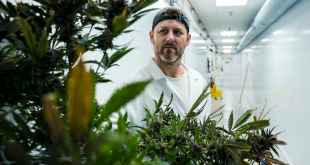
Marijuana provided to researchers from the government looks nothing like what medical marijuana patients actually purchase – it looks nothing like the marijuana anyone is used to seeing. Due to mandates adopted in the 1960s, marijuana used for research must come from the federal government.
Researchers aren’t happy with having to use medical marijuana that looks and feels different from traditional marijuana, according to The Washington Post. Researcher Sue Sisley is currently conducting a study regarding veterans and PTSD. She is less than pleased with the product being supplied for her study.
Sisley said, “It doesn’t resemble cannabis. It doesn’t smell like cannabis.”
The government-issued marijuana resembles chopped up grass clippings with a yellowish tint. It’s stringy, not chunky with shades of green like it should be.
Jake Browne, a professional marijuana reviewer, said it is “flat out, not a usable form of cannabis.”
Browne has reviewed hundreds of strains and operates the Grow-Off competition.
He said, “In two decades of smoking weed, I’ve never seen anything that looks like that. People typically smoke the flower of the plant, but here you can clearly see stems and leaves in there as well, parts that should be discarded. Inhaling that would be like eating an apple, including the seeds inside it and the branch it grew on.”
Marijuana used for research is grown at the University of Mississippi and is overseen by the National Institute on Drug Abuse (NIDA). The DEA has said it will allow other entities to supply research marijuana, although none of those additional entities have been approved yet.
The medical marijuana grown at the University of Mississippi has a maximum potential THC concentration of 13-percent. Sisley did her own testing, and the marijuana was not the 13-percent it was claimed to be. Her findings showed that it is more around the area of 8-percent THC, which is far weaker than most medical marijuana available to patients visiting dispensaries. Colorado dispensaries average a 19-percent THC concentration.
Researchers find that the marijuana that they are provided with isn’t potent enough to produce good results. The good news for researchers is that the NIDA does have plans to grow different marijuana strains and provide higher THC strains later in 2017.
Photos: Oliver Contreras/WashPost (left) and MAPS (right)
 ONLY 420 | Cannabis Culture Everything 420
ONLY 420 | Cannabis Culture Everything 420






